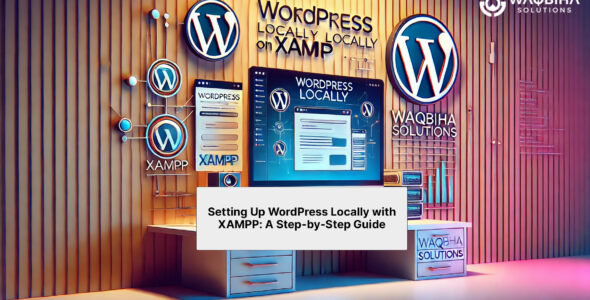Creating a website can be difficult, especially for non-techies. However, WordPress makes it easy for anyone to create a website that looks professional. This “WordPress for Dummies” guide covers everything you need to start.
What is WordPress?
WordPress was originally a blogging platform in the 1990s, but it can now be used to develop membership sites, forums, LMS, e-commerce sites, and more. WordPress allows users to make their website come to life with its easy-to-use layout, wide range of themes and plugins, and adaptability. If you’re a newbie or an experienced web developer, WordPress is a flexible and easy-to-use platform for building and managing your online store, blog, or business website.
Everything you need to get started
Starting a new WordPress website requires a few things, such as a domain name, web hosting, and deciding on the site’s structure. Let’s look more closely at the steps you need to perform well.
Step 1: Choosing a Domain and Hosting
Your domain is your website’s online address (e.g., www.waqbiha.com). You’ll need to purchase a domain and a hosting plan. Many hosting providers, like Bluehost, SiteGround, and HostGator, offer affordable plans with one-click WordPress installation.
Step 2: Installing WordPress
Most hosting providers offer a one-click installation process for WordPress. Once you’ve signed up for a hosting plan, look for the WordPress installation option in your dashboard. Follow the prompts, and you’ll have WordPress installed in minutes.
Step 3: Selecting a Theme
After installing WordPress, you’ll need to choose a theme. Go to the WordPress dashboard, navigate to Appearance > Themes, and browse the available themes. Preview different themes and activate the one you like best. For beginners, it’s best to start with a simple, responsive theme.
Step 4: Installing Essential Plugins
To enhance your site’s functionality, install some essential plugins. Here are a few recommendations for “WordPress for Dummies”:
- Yoast SEO: Helps optimize your content for search engines.
- Contact Form 7: Creates contact forms for your site.
- WP Super Cache: Improves site performance by caching pages.
- Jetpack Offers a suite of security, performance, and site management tools.
To install plugins, go to the WordPress dashboard, navigate to Plugins > Add New, search for the plugin, and click “Install Now.”
Step 5: Creating Content
Now that your site is set up, it’s time to create content. WordPress uses a block editor called Gutenberg, making creating and formatting posts and pages easy. Here’s how to get started:
- Posts: Ideal for blog entries, news updates, and other regularly updated content. Go to Posts > Add New, enter your content, and publish.
- Pages: Best for static content like your About, Contact, and Home pages. Go to Pages > Add New, enter your content, and publish.
Use headings, images, and other media to make your content engaging and easily read.
Step 6: Customizing Your Site
To make your site unique, customize your theme and settings. Here are some customization tips:
- Customize Your Theme: Go to Appearance > Customize to modify your theme’s settings, such as colors, fonts, and layout.
- Add Widgets: Widgets add features to your site, like recent posts, search bars, and social media links. Go to Appearance > Widgets to add and configure widgets.
- Set Up Menus: Create custom navigation menus to help visitors navigate your site. Go to Appearance > Menus to create and manage menus.
Step 7: Launching Your Site
Once you’re happy with your content and design, it’s time to launch your site. Double-check everything to ensure it looks and functions correctly. When you’re ready, go live by sharing your domain with the world.
Conclusion
“WordPress for Dummies” makes building a website easier, so anyone can do it, even if they aren’t aware of the technologies. WordPress is the best tool for making a business website because it is easy to use and has themes and plugins that can be changed to fit your needs. Follow this guide to launch your website quickly.

 My Account
My Account 



